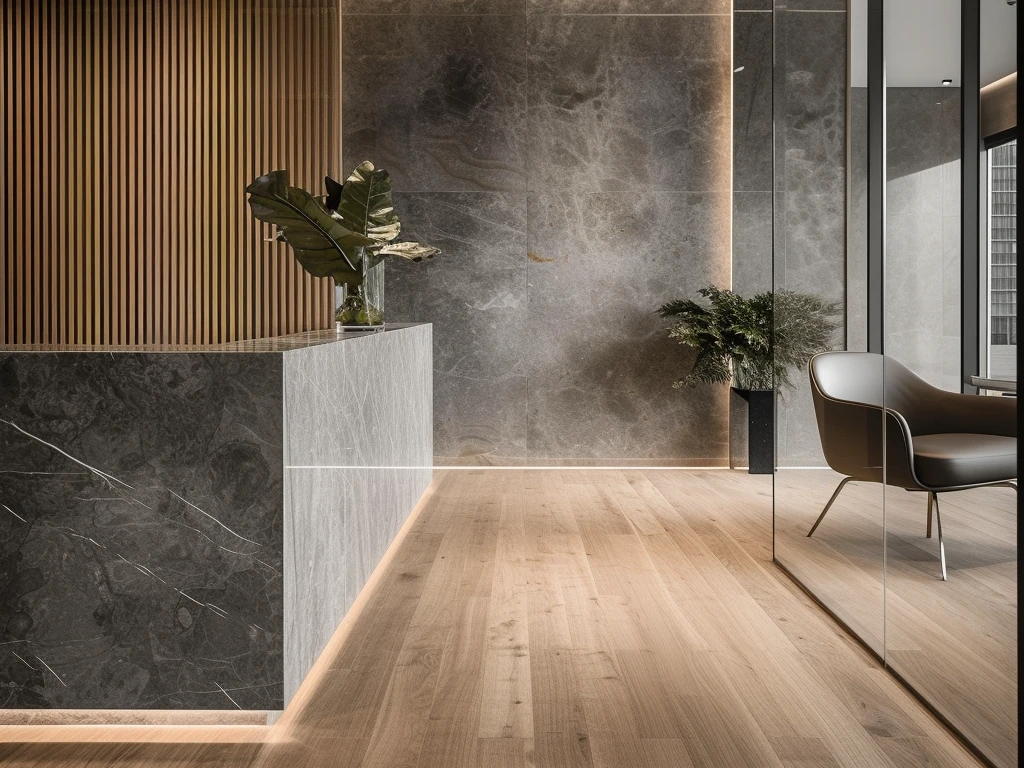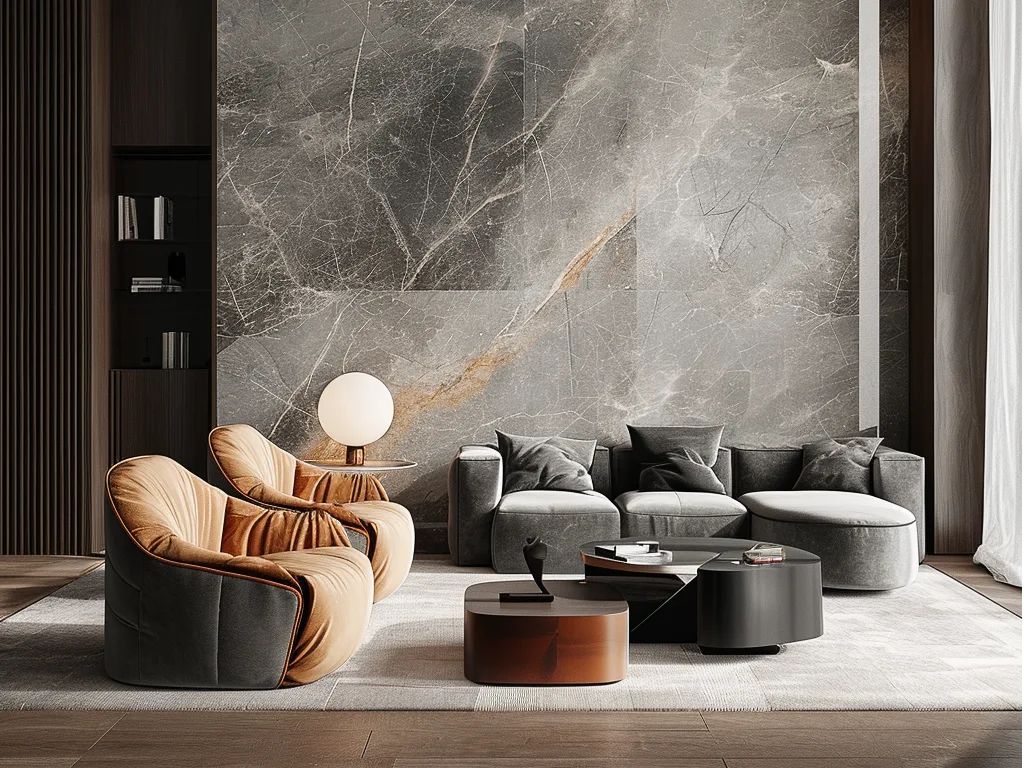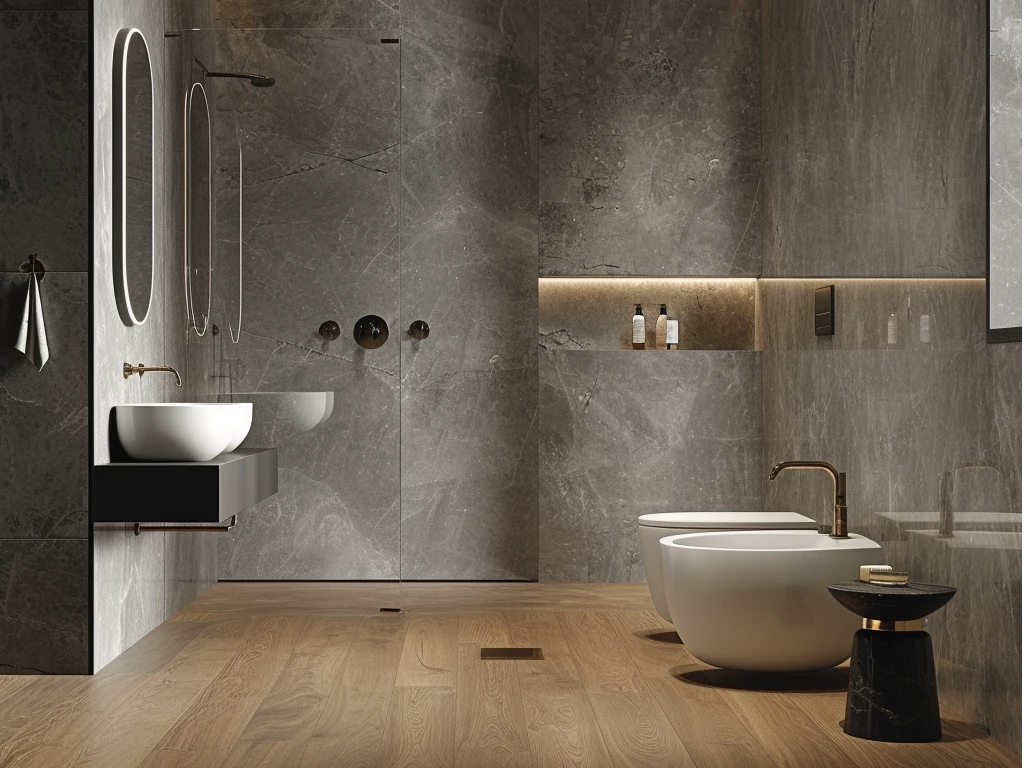The Evolution of WPC Wall Panel Designs
The Origins and Development of WPC Panels
Wood Plastic Composite (WPC) wall panels have come a long way since their introduction into the market. Their initial purpose was to offer an option to traditional wood by blending the beauty of natural wood with the strength of synthetic materials. Initially designed for practicality with features, like weather and decay resistance WPC wall panels have evolved over time into solutions that meet both structural and aesthetic requirements.
Key Features that Set WPC Wall Panels Apart
The special feature of WPC wall panels lies in the mix of materials used in their construction; usually, a combination of wood fibers and thermoplastics is employed for this purpose. It gives them durability against wear and tear and resistance against moisture while also requiring minimal upkeep efforts.WPC panels are also recognized for their friendly qualities as they often use recycled materials during production. The diverse range of finishes and textures available makes them a great fit, for both outdoor uses.
Popular Design Trends in WPC Wall Panels
Minimalistic and Sleek Aesthetic Designs
Neutral Tones and Clean Lines
Modern architectural designs focus on simplicity and sophistication which can be observed through the increasing popularity of minimalist WPC wall panel designs that capture neutral shades like beige and gray with white to attain a sleek and ageless look that is easily combined with various interior color schemes in modern spaces.
Integration with Modern Architectural Styles
The designs of WPC wall panels have progressed to match architectural styles known for their geometric forms and spacious layouts. These panels’ smooth profiles elevate the charm of buildings while upholding a harmony between style and utility. Their versatility enables architects to create designs that align with present-day preferences.
Nature-Inspired Patterns and Textures
Wood Grain Finishes for a Natural Look
Wood grain finishes are the most desirable in the design of WPC panels because they can successfully mimic the look and feel of wood without affecting the strength and durability thanks to improvements in print technology that make it possible to create realistic wood textures.
Incorporating Organic Elements
The use of textures inspired by nature goes beyond wood-like finishes to incorporate surfaces that resemble stone and other organic patterns as well. These patterns add an appeal to rooms while still providing the practical advantages of WPC materials. Combining beauty with advanced engineering techniques allows these panels to meet the needs of homeowners looking for a balance between contemporary style and the natural world.
Advanced Functionalities in Modern WPC Wall Panel Designs
Enhanced Durability and Weather Resistance Features
Latest WPC wall panel designs focus on the added resilience achieved by using materials that better resist severe weather conditions without becoming deformed by exposure to direct sunlight or wetness for extensive periods. They are robust and reliable for consistent performance, residential as well as commercial applications.
Eco-Friendly and Sustainable Design Approaches
Use of Recyclable Materials in Production
The sustainability focus is central to the creation of WPC wall panel designs with numerous companies integrating recycled wood fibers, among other features, into their offerings to reduce environmental degradation while maximizing the utilization of resources.
Energy-Efficient Manufacturing Processes
Modern production, for WPC panels focuses on energy conservation using cutting-edge technologies that restrict the production of waste by a significant amount contributing to energy conservation and reducing the carbon footprint of production activities.
Manufacturers are always looking for ways to enhance the attractiveness and practical functionality of modern WPC wall panel designs with these new developments.
Customization and Personalization in WPC Panel Design
Tailoring Designs to Fit Unique Space Requirements
The option to tailor WPC wall panels to suit spatial requirements has transformed the world of interior and exterior design significantly. Architects and designers now possess the capability to craft custom solutions that cater to project needs. Whether it involves a home with measurements or a business space that requires exact configurations WPC panel designs provide unmatched flexibility. Advanced manufacturing methods allow for the creation of panels in shapes, sizes, and thicknesses resulting in effortless integration, into any architectural plan. This versatility not only improves functionality but also enhances visual appeal.
Incorporating Branding Elements for Commercial Spaces
Integrating components into the design of WPC wall panels has emerged as a notable trend in commercial settings lately! Companies are now harnessing the flexibility of these panels to showcase their brand image with tailored patterns and color combinations. In particular, CNC precision cutting technology plays a role in achieving detailed designs that align with a company’s visual brand representation. Such customized elements not only boost brand recognition but also uphold the enduring and easy, care-for qualities of WPC materials.
Technological Innovations in WPC Wall Panels
Smart Panels with Integrated Technology Features
Soundproofing Capabilities for Acoustic Optimization
Contemporary WPC wall panels are created to cater to the increasing need for acoustics in homes and businesses alike. They utilize cutting-edge technologies to minimize sound transfer between areas. This attribute is especially advantageous, in city settings where outside noise can disturb indoor environments. The blend of materials and innovative design guarantees top-notch acoustic results without sacrificing aesthetic appeal.
Thermal Insulation for Energy Efficiency
WPC wall panels have been enhanced with thermal insulation technology to improve their performance levels significantly. Leveraging insulating features in their design ensures control of indoor temperatures. This results in reduced dependence on heating and cooling systems reducing energy usage and saving costs in the run. These advancements support eco-building practices making WPC panels a top pick, for environmentally conscious projects.
CNC Precision Cutting for Intricate Design Details
The emergence of CNC (Computer Numerical Control) precision cutting has unlocked creative avenues for adding intricate design elements to WPC wall panels. The use of this technology allows makers to create elaborate patterns and intricate shapes with exceptional precision. From designs to practical aspects such as ventilation openings CNC cutting guarantees uniformity and excellence in each panel. This high level of accuracy not only elevates the visual allure but also broadens the range of uses for WPC panel designs, in diverse sectors.
Choosing Latitude’s WPC Wall Panel for Your Projects
Unique Design Options Offered by Latitude
Latitude is known for being a provider of creative WPC wall panel designs that meet a variety of style preferences and practical requirements well suited for different tastes and spaces. They offer a wide selection featuring finishes resembling wood grain textures akin to stone and contemporary minimalist designs. Their products are carefully made to ensure long-lasting durability with a refined look suitable, for any environment.
Commitment to Quality and Sustainability Standards
Latitude’s dedication to quality is seen in the employment of a number of the finest materials like 80 to 120 mesh wood powder scented with sandalwood for the added texture and nice finish that emits a soft woody scent when burnished. With the employment of calcium in products, they not only enhance environmental sustainability but also contribute to the overall flexibility of the product.
Latitude also utilizes calcium zinc stabilizers to enhance stability and incorporates yellow inorganic pigments for superior weather resistance performance. In addition to these, components are polyethylene wax (PE wax) serving as a lubricant in the production process and sodium bicarbonate foaming agents that effectively inhibit crack propagation. These specific solutions highlight Latitude’s commitment to offering products that prioritize aesthetics while being environmentally conscious and ensuring longevity.
FAQ
Q: How do modern WPC designs achieve a realistic wood-like appearance?
A: Brands like MATECO use 2nd-generation co-extrusion technology to create randomized wood grain patterns and rich textures. Surface treatments like sanding, embossing, and ultra-UV coatings ensure long-lasting color retention (15+ years).
Q: Are WPC wall panels eco-friendly?
A: Yes. Most WPC panels are made from 60% recycled wood/bamboo fibers and 35% HDPE, with certifications like CE, RoHS, and ISO 14001. They are 100% recyclable and reduce reliance on natural timber.










